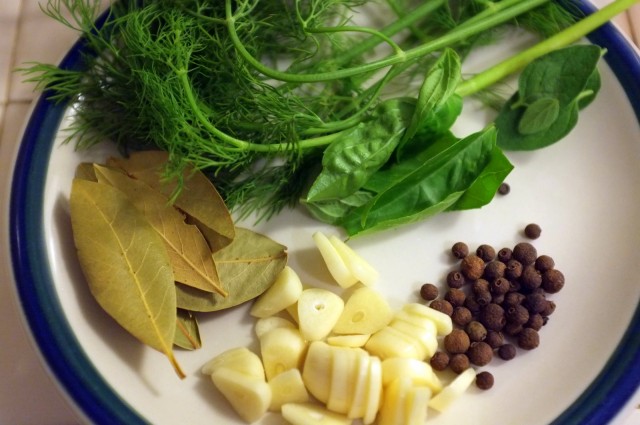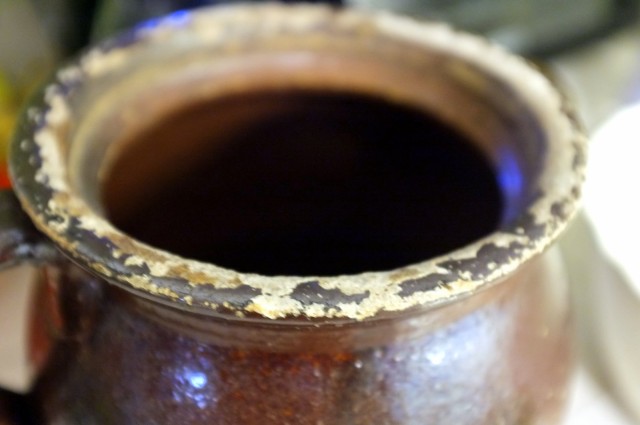“Ile czosneku dajesz?”
“Na oko, na oko.”
When you’re getting recipes from Babcia, they tend to take that turn. “How much garlic do you add?” you might ask. “Just eyeball it,” comes the reply.
How can I possibly eyeball it when I’ve never done it in my life? Dziadek taught me in a similar way how to prepare the brine for meat when preparing pork for smoking. It was actually experience that taught me that, in reality, the proportions don’t matter so very much as you might expect.
Given the fact that the instructions Babcia provided for making pickles roughly approximated the instructions Dziadek gave for making the brine, I just eyeballed it.
Dill, whole allspice, some garlic, bay leaves — the Polish basics. I decided to add some fresh oregano and basil, knowing it probably wouldn’t have any effect given the amount of other spices I was putting in the brine.
I’ve always loved pickles, but it was in Poland that I learned what a true pickle could be, not preserved in some vinegar solution but made in a brine that leaves behind the look and taste of raw cucumber but transforms it just enough that it’s not, well, raw cucumber.
Given the number of cukes we’re pulling off our vines every day this year, we knew fairly early in the growing season that this would be the year we finally learned how to make our own pickles. Such a simple process: some herbs, some salt water, some cucumbers, a ceramic pot, and a bit of gauze to cover it all.
“You should be able to eat the smaller ones after four days or so,” Babcia explained. It might be difficult to wait that long.



